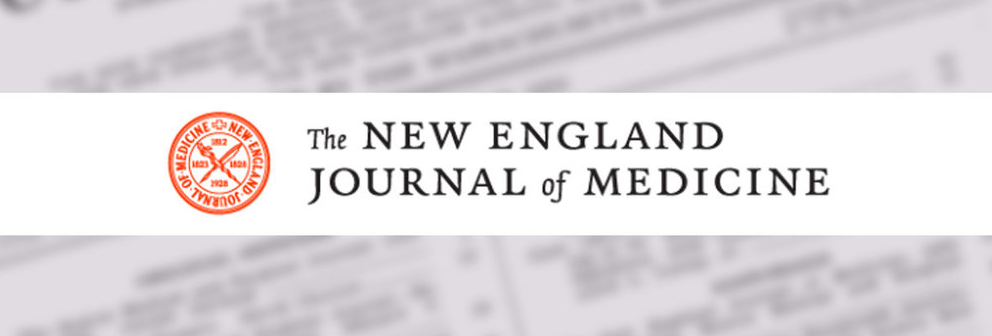

By Linh Nguyen
Doctors shared knowledge on the implications of the threat of COVID-19 in jails and prisons on incarcerated populations and the world, and how to flatten the curve for incarcerated populations—and called for decarceration of the inmate population in order to combat the spread of the disease through vulnerable incarcerated populations.
“We believe that we need to prepare now, by ‘decarcerating,’ or releasing, as many people as possible, focusing on those who are least likely to commit additional crimes, but also on the elderly and infirm,” doctors wrote in a paper published in the prestigious New England Journal of Medicine.
Because of confined spaces, restricted movement and limited medical care, incarcerated populations are more vulnerable to the rapid transmission of infectious diseases, such as HIV, hepatitis C, tuberculosis and now coronavirus. Furthermore, incarcerated populations suffer a higher concentration of these diseases due to disparities in access to healthcare found in groups that are disproportionately more likely to be incarcerated—racial minorities, persons without stable housing or persons suffering from substance abuse or mental disorders.
Doctors believe that in order to control the spread of COVID-19 in correctional facilities, more proactive and comprehensive actions must be taken. These include developing a preparedness strategy and strict implementation of that strategy.
According to an article in the New England Journal of Medicine, “improved preparation is essential to minimizing the impact of this pandemic on incarcerated persons, correctional staff, and surrounding communities.”
While intervention strategies did exist, their implementation was often hindered or ineffective due to resource limitation and policy constraints. A new course of action must be agreed upon that addresses  obstacles and solutions for overcoming those issues.
obstacles and solutions for overcoming those issues.
The authors of the article address three levels of preparedness to operationalize a plan for incarcerated populations.
The first level is that the virus “should be delayed as much as possible from entering correctional facilities.”
So far, to address that level, the Federal Bureau of Prisons, certain states and districts have already suspended visitation by community members, limited visits by legal counsel and reduced facility transfers for incarcerees. In place, they are offering teleconferencing services for personal and legal visits. By doing so, officials are limiting the transmission of the virus from outside the facility to entering within the facility.
Still, correctional officers and staff members must travel to enter the correctional facility, which continues to pose a threat to incarcerated people who cannot move in and out of the facility for social distancing. By mid-March, a handful of correctional staff members had tested positive for COVID-19. In early April, the first incarcerated person died from COVID-19.
The authors of the article fear that the same incident that occurred on board a cruise ship in Japan will also occur within correctional facilities, in which the virus was rapidly transmitted from one passenger to nearly all passengers and crew members.
The second level is that if [the virus] is already in circulation, it should be controlled. This means that incarcerees should be given adequate medical attention and proper preventative equipment.
One concern the authors have is that the coronavirus vaccine would not be distributed to incarcerated populations when one has been found and produced. This was an issue in 2009 with the H1N1 pandemic, in which the failure to include correctional facilities in emergency planning efforts was exposed.
In the spring of 2010, the vaccine for the H1N1 virus was produced in plentiful quantities in the United States, yet most small jails did not receive the vaccine. Thus, vulnerable persons in these jails, such as pregnant and older incarcerees, did not receive the vaccine. In addition, unvaccinated incarcerees continued to roam as health risks to their fellow unvaccinated incarcerees.
The third level is that “jails and prisons should prepare to deal with a high burden of disease.
“The better the mitigation job done by legal, public health, and correctional health partnerships, the lighter the burden correctional facilities and their surrounding communities will bear,” wrote the authors.
The doctors believe that the best way to prepare is to reduce the prison population. This includes releasing “as many people as possible” and urging police and courts to suspend arresting and sentencing people. This applies to those who are least likely to commit more crimes, the elder and infirm and low-level crimes and misdemeanors.
In addition, correctional facilities should allow for the isolation and separation of infected incarcerated persons and those who might be infected from the general prison population, hospitalize the seriously ill, and identify recovered correctional staff and health care providers so that they can help with custodial and care efforts during staff shortages—as they may have a level of immunity.
“Such measures will also reduce the burden on the correctional system in terms of stabilizing and transferring critically ill patients, as well as the burden on the community health care system to which such patients will be sent,” the doctors wrote. “Each person needlessly infected in a correctional setting who develops severe illness will be one too many.”
The doctors predict that the actions (or lack thereof) of correctional facilities during this time will have an impact globally, beyond a national, state or local scale.
“The boundaries between communities and correctional institutions are porous,” the doctors stated, “as are the borders between countries in the age of mass human travel.”
If correctional facilities act appropriately right now (as outlined above), the curve would be projected to “flatten” and the global impact would be reduced. Ex-incarcerees would pose less of a public health risk upon decarceration as they travel to essential needs.
“To respond to this global crisis, we need to consider prisons and jails as reservoirs that could lead to epidemic resurgence if the epidemic is not adequately addressed in these facilities everywhere,” the doctors argued.
Therefore, by adopting strategies to mitigate the spread of COVID-19 as outlined by the doctors who wrote the article in the New England Journal of Medicine, correctional facilities would be protecting the lives of incarcerated people, their correctional officers and staff and the general public beyond a national, state or local context—as the authors argued that the “interrelation of correctional-system health and public health is a reality not only in the United States but around the world.”
To sign up for our new newsletter – Everyday Injustice – https://tinyurl.com/yyultcf9






Prisoners like this?
https://news.yahoo.com/florida-inmate-freed-over-covid-045745009.html
Hi Keith,
This article focused on the essay written by the New England Journal of Medicine and the risk of catching COVID-19 given current incarceration conditions in prisons and jails. We have posted other articles about how the courts are implementing judicial orders regarding release and other legislation but this article is approaching the issue from a health standpoint.